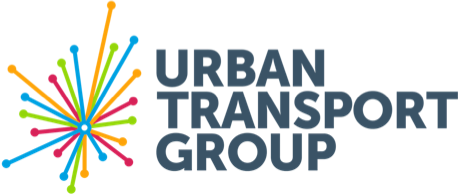Not just green: Investing in zero emission buses could deliver nearly 50 million extra journeys a year, new modelling shows

- Inaction on buses would see patronage fall by 35%, from 780 million trips a year in 2022/23 to 506 million trips by 2035/36
- Investment in bus priority could also deliver an additional 18 million bus trips a year by 2035/36
Government investment in zero emissions buses (ZEBs) could deliver an extra 46 million journeys in city regions (outside London) each year by 2035/36, according to new modelling by the Urban Transport Group.
The same investment would also see an additional 33 million kilometres made by buses per year and a 4% increase in revenue over the same time frame.
Under Government’s own estimates, more than half of the buses used in the city regions outside London are over a decade old and are therefore likely to be diesel powered.
The new projections are taken from a report, developed with consultants Steer, which sets out several scenarios for investing in ZEBs as well as bus priority – schemes such as bus lanes and priority at traffic lights which prioritise the bus over other forms of motorised traffic.
These projections are set against a ‘do nothing’ scenario, which, in line with Government plans, sees the current enhanced revenue funding deals for bus end in April 2025, after which revenue funding would return to pre-pandemic levels. Under this ‘do nothing’ scenario, bus patronage in city regions would fall from 780 million trips a year in 2022/23 to 506 million trips in 2035/36 - a loss of 274 million trips in 12 years. Vehicle kilometres would also fall from 468 million to 267 million a year over the same period.
The report modelled the impact of capital funding (for both ZEBs and bus priority) and revenue funding in the metropolitan areas (against the ‘do nothing’ scenario). It found that by 2035/36:
- Investment in ZEBs could deliver an additional 46 million trips and 33 million vehicle kilometres a year
- Investment in bus priority could deliver an additional 18 million trips and 7 million vehicle kilometres a year
- Maintaining the current enhanced revenue funding beyond April 2025 could deliver an additional 48 million trips and 33 million kilometres a year
- Combining all three (so, investing in ZEBs and bus priority, and continuing revenue funding) could add an additional 126 million trips and 88 million vehicle kilometres a year.
Jason Prince, Director of the Urban Transport Group, said:
“The modelling is clear – if we don’t act, our city region bus services are in danger of being severely hollowed out, losing more than a third of passenger journeys and nearly halving the size of networks between now and 2035.
“Public transport needs to be seen not as a cost, but as an investment – an investment in our economy, in our communities and in the environment. For most people, the bus is vital. By committing to long-term capital and revenue investment in green buses and bus priority schemes, Government can help to prevent bus networks from being scaled back further and stem the loss of millions of journeys each year.”
Neil Chadwick, a Director at Steer, said:
“No further action on buses would isolate communities and those who have no other option but to travel by bus. It would make the shared ambitions of Government and local authorities - to get bus patronage back to pre-pandemic levels and then to set a platform for further growth - unachievable.
"For bus to fully support the economic future of our towns and cities, and the path to net zero, a new and long-term commitment to supporting local bus services is needed.”
To understand the impact of bus priority, different scenarios were modelled where all bus journeys across the metropolitan areas were speeded up by different amounts. In the scenario where bus journeys were 1 minute 30 seconds faster after five years (with equal improvements each year), an additional 18 million trips were made per year, vehicle kilometres increased by 7 million a year, and revenue also increased by 3.7% a year.
Related content
Report

